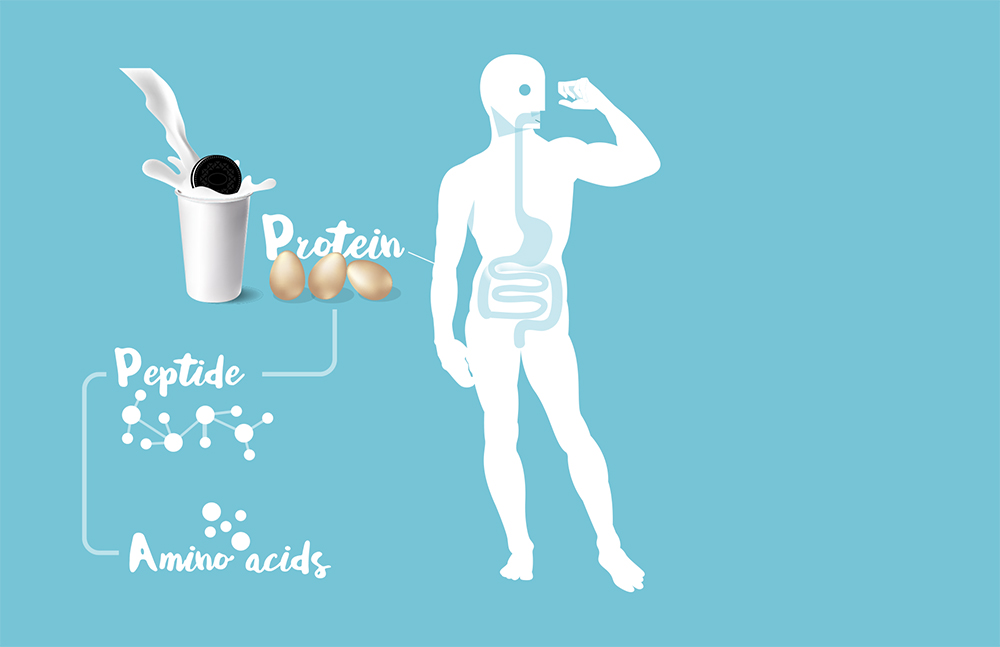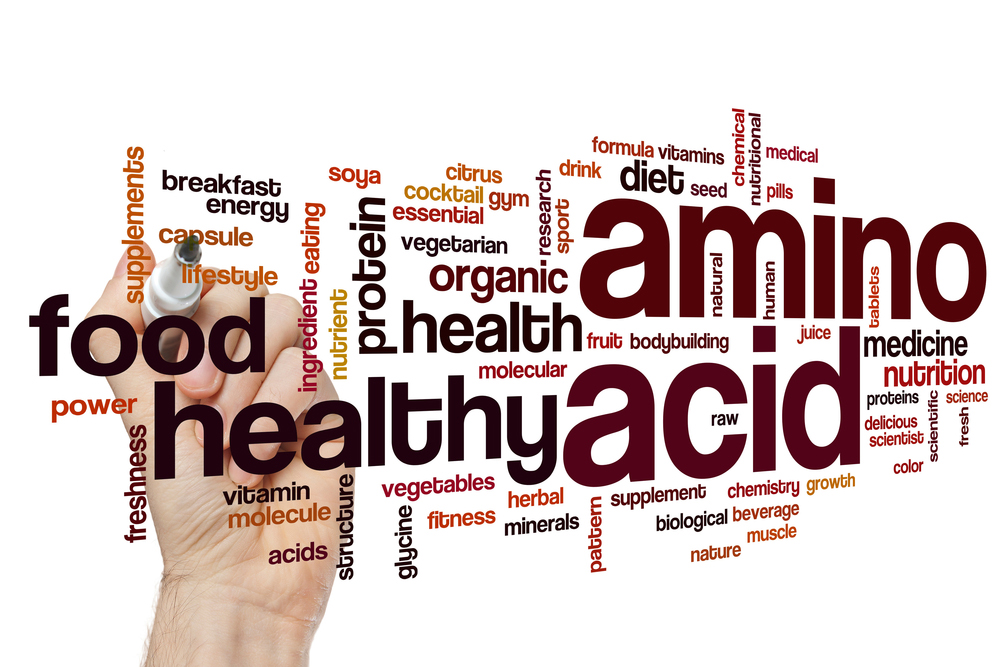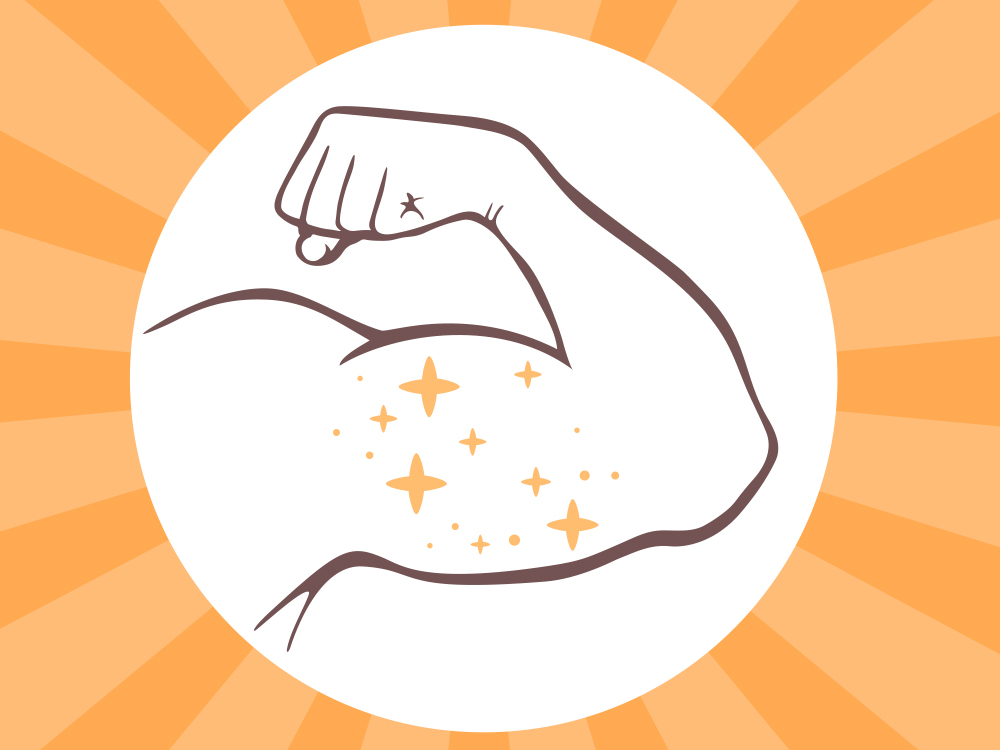From a biochemical point of view, the human body is essentially composed of water.
In a non-overweight person, the second largest component of the body is protein. Simply put, a protein is a giant string of pearls where each of the pearls is an amino acid.
This means that amino acids are the building blocks of proteins and therefore of the human body. They are found in all our cells, tissues, organs. . . and are therefore essential to the proper functioning of the body due to the diversity of their functions.
Being the basic element of proteins, it is the sequence of these amino
acids that determines the function of the protein. It is possible to
distinguish between two major families of proteins:
Structural proteins: which are found in the body.
- Structural proteins: found in muscles, hair, skin, organs, etc. These allow wound healing processes and renew ageing tissues and cells.
- Functional proteins: also very important because they are involved in transport, storage, signalling (hormones) or reaction catalysis thanks to enzymes, which are none other than proteins.
What is an amino acid?
When they are in a chain, they give a function to the protein. But on their own, they also have roles in the body. In humans, there are a total of 22 amino acids known as "proteinogenic", i. e. used to produce proteins. Of these 22, 8 are said to be essential because they cannot be synthesised by the body.
This means that they must absolutely be provided by the diet or food supplements. They are: Leucine, Threonine, Lysine, Tryptophan, Phenylalanine, Valine, Methionine, Isoleucine.
There is a 9th essential amino acid in children which is Histidine, the body acquires the ability to synthesise it with age.
There is a mnemonic to remember the 8 amino acids: Le(ucine) Very (threonine) Lyrical(lysine) Tristan (tryptophan) made(phenylalanine) vachement (valine) mediter (methionine) Iseult (isoleucine).
The other amino acids are therefore called non-essential amino acids, they are also involved in protein synthesis but can be produced by the body.
They can, and should, be provided by the diet as endogenous synthesis is not always sufficient to meet requirements.
The role of essential amino acids
BCAAs or branched-chain amino acids:
- Leucine:This amino acid is extremely well known by body-building enthusiasts. Indeed, it activates the synthesis of proteins also called anabolism. It therefore stimulates muscular recovery, the reconstruction of fibres damaged by physical effort and therefore muscular development 1.
- Isoleucine:Also involved in muscle metabolism, this amino acid is highly concentrated in the muscles. It also helps to limit muscle loss, stimulates the immune system, increases the synthesis of red blood cells and growth hormones. This makes it an important ally for optimising muscle recovery. 2.
- Valine:Like the other branched-chain amino acids, it acts on growth and muscle development to help recovery. But not only that, valine potentiates and stimulates the nervous system which allows a better general recovery. In addition, by acting on the nervous system, it improves cognitive functions and thus concentration during physical activity 3.
Aromatic amino acids :
- Phenylalanine :Precursors of other amino acids such as tyrosine, phenylalanine induces the synthesis of neurotransmitters and thus acts on energy metabolism by inducing the synthesis of messengers such as dopamine or noradrenaline 4. Phenylalanine must therefore be provided by the diet as it also conditions the psychological state.
- Tryptophan: Also a precursor of neurotransmitters, tryptophan stimulates the synthesis of serotonin, also known as the "happiness hormone" 4. It therefore has a calming effect that regulates mood, appetite and sleep.
Sulphur amino acids:
- Methionine:This amino acid is involved in many physiological processes. It is involved in the detoxification of the liver and kidneys via its antioxidant action, it limits oxidative stress, stimulates the synthesis of muscle proteins and also enables the nails and hair via an action on keratin 5.
Dibasic amino acids:
- Lysine:Lysine is an amino acid that is also involved in the process of protein synthesis, particularly collagen, which is present in connective tissue, skin, joints, etc. A lack of lysine can lead to a weakened immune system 6.
Hydrophilic hydroxylated amino acids :
- Threonine:Threonine improves the assimilation of certain nutrients. Like lysine, it stimulates the synthesis of collagen and elastin and has an effect on mood, since a lack of threonine can lead to irritability.
Amino acid intake
As previously mentioned, it is essential to provide these amino acids via the diet as they are not synthesised by the body.
The role of amino acids in the body is essential because they influence recovery after physical effort, mood, digestive, immune and nervous systems! Each of these amino acids exists in the form of food supplements in varying doses. But they are all found in the diet.
The quality of a protein is assessed by the content of each of the amino acids it contains.
In fact, the quantities of amino acids contained in 1 gram of the protein studied are compared with a reference protein given by organisations such as the FAO, WHO or EFSA.
This calculation makes it possible to evaluate a chemical index (ratio between the amino acids of the protein studied in relation to the reference protein) and the biological value (percentage of ingested amino acids that is assimilated).
In general, proteins can be used as a source of energy. Generally speaking, animal proteins are of much better quality because they contain all the amino acids in proportions that correspond perfectly to human needs.
Finally, animal proteins also have a better biological value because, unlike vegetable proteins, they contain less fibre and anti-nutritional factors which limit the absorption and assimilation of proteins, and therefore of amino acids.
Conclusion
It is for all these reasons that the protein intake must be calculated for each person. The quantity is important, as well as the quality of the proteins, so that each of the essential and non-essential amino acids is provided in sufficient quantities.
The requirements for each of these must of course be adapted, as with each of the nutrients, according to the level of daily physical activity, age, sex and state of health.





